Research Platform
The institute currently has 17 provincial and municipal key laboratories: the Ministry of Education Key Laboratory of Optoelectronic Devices and Systems, Guangdong Province Key Laboratory of Optoelectronic Devices and Systems, Guangdong-Hong Kong Joint Research Center for Optical Fiber Sensing Technology, Guangdong Province Exhalation Test Engineering Technology Research Center, Shenzhen Key Laboratory of Laser Engineering, Shenzhen Key Laboratory of Micro/Nano Photonics and Information Technology, Shenzhen Key Laboratory of Optical Fiber Sensor Technology, Shenzhen Key Laboratory of High-Purity Germanium Materials and Detector Manufacturing, Shenzhen Optical Fiber Sensing Network Technology Engineering Laboratory, Shenzhen Key Laboratory of Biomedical Optics Micro/Nano Detection and Imaging, Shenzhen Key Laboratory of IoT Photon Devices and Sensing Systems, Shenzhen Key Laboratory of Optical Materials and Femtosecond Laser Fabrication Technology, Shenzhen Key Laboratory of Advanced Thin Films and Applications, Shenzhen Key Laboratory of Intelligent Optical Measurement and Perception, Shenzhen Key Laboratory of Photonics and Biophotonics, Shenzhen Key Laboratory of Ultrafast Laser Micromanufacturing, and Shenzhen Key Laboratory of Nuclear and Radiation Safety.
The Ministry of Education/Guangdong Province Key Laboratory of Optoelectronic Devices and Systems (hereinafter referred to as the Key Laboratory) was established under the leadership of renowned optoelectronics expert and Chinese Academy of Engineering academician Niu Hanben in December 2002. It successfully passed the acceptance inspection of Guangdong Province in November 2005 and the Ministry of Education in December 2007, becoming a key laboratory jointly built by the Ministry of Education and Guangdong Province. The development of the Key Laboratory has been recognized by the Ministry of Education and Guangdong Province. In 2022, the "Ministry of Education Key Laboratory of Optoelectronic Devices and Systems" was rated as excellent in the evaluation of key laboratories by the Ministry of Education, marking the first time in 20 years since its establishment that the Key Laboratory received such recognition. Additionally, the Key Laboratory also received an excellent rating in the 2022 evaluation of key laboratories in Guangdong Province.
The Key Laboratory is closely aligned with the national strategic needs and the construction requirements of the Guangdong-Hong Kong-Macao Greater Bay Area's optoelectronic industry, adhering to the principle of "four orientations." It focuses on addressing common basic scientific issues and key technologies in optoelectronic devices and systems, aiming to contribute to both global technological frontiers and public health. The laboratory has gathered and cultivated a large number of high-level talents engaged in basic and applied research, promoting domestic and international scientific cooperation and exchanges, and achieving several original research results. Currently, the Key Laboratory, based on the development trends of the optical engineering discipline and the national strategic goals, conducts research on common basic scientific issues and key technologies in optoelectronic devices and systems, with a focus on five main research directions: intelligent optical measurement and imaging technology, biomedical optics and photonics, optical fiber sensing and laser technology, integrated photonics and functional materials, and transient optics and optoelectronics. It has established a strong and distinctive base for optoelectronic research and talent cultivation, actively conducting basic theoretical and applied research in related fields.
With the support and driving force of the Key Laboratory, a number of provincial and municipal research institutions have been successively established, including the Guangdong-Hong Kong Joint Research Center for Optical Fiber Sensing Technology, Shenzhen Key Laboratory of Ultrafast Laser Micromanufacturing, Shenzhen Key Laboratory of Intelligent Optical Measurement and Perception, Shenzhen Key Laboratory of IoT Photon Devices and Sensing Systems, Shenzhen Key Laboratory of Biomedical Optics Micro/Nano Detection and Imaging, Shenzhen Key Laboratory of Laser Engineering, Shenzhen Key Laboratory of Micro/Nano Photonics and Information Technology, Shenzhen Key Laboratory of Advanced Thin Films and Applications, Shenzhen Key Laboratory of Optical Materials and Femtosecond Laser Fabrication Technology, etc., greatly enriching and strengthening the research capabilities of the Key Laboratory. Through long-term research efforts, the Key Laboratory has developed distinct characteristics and made significant impacts in international academic fields. The research directions of the Key Laboratory are closely related to the dominant industries in the Greater Bay Area, playing a significant role in promoting the economic and social development of Shenzhen City.
Currently, the Key Laboratory has formed a research team with reasonable age structure and international influence, led by academicians of the Chinese Academy of Sciences as academic leaders, with core members including national outstanding youth, national-level experts, and young talents selected by the Ministry of Human Resources and Social Security of the People's Republic of China, as well as provincial and municipal level talents. The Key Laboratory has a total of 145 fixed personnel, including 41 senior professionals and 43 associate professionals, with research backbone members under the age of 40 accounting for 40%, including 13 national-level talents (including 1 academician of the Chinese Academy of Sciences, 3 national outstanding youth, and 4 national outstanding youth). In the past five years, the Key Laboratory has trained 5 national-level talents, including 1 national outstanding youth and 3 national outstanding youth. Over the past five years, laboratory members have undertaken 434 research projects, including national key research and development plans, major national scientific instrument development projects, National Natural Science Foundation of China key projects, National Outstanding Youth Fund/National Outstanding Youth projects, and key international cooperation projects (190 at the national level, 64 at the provincial and ministerial levels, 94 at the municipal level, and 86 horizontal projects), with a total research funding of 390 million yuan. They have published 571 SCI papers in journals such as Nature Communications, Light-Sci. & Appl., Advanced Materials, and Phys. Rev. Lett., and obtained 192 authorized Chinese invention patents and 23 international invention patents. They have won 15 science and technology awards, including the first prize of the Military Science and Technology Progress Award, the second prize of the China Optics Science and Technology Award, the second prize of the Guangdong Province Science and Technology Progress Award, and the second prize of the Shenzhen Natural Science Award.


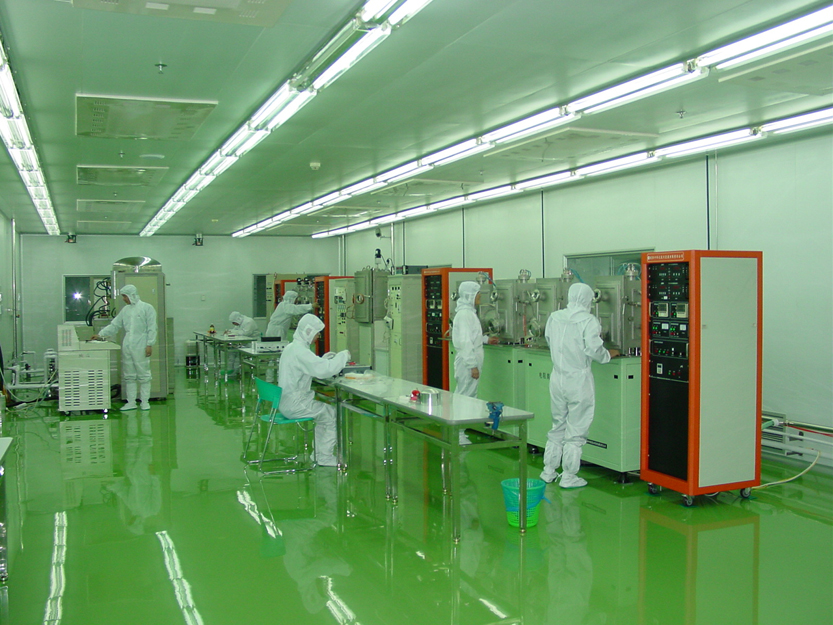
Ultra-clean Laboratory

Graduate Students Conducting Experiments
Guangdong-Hong Kong Joint Research Center for Optical Fiber Sensing Technology
The "Guangdong-Hong Kong Joint Research Center for Optical Fiber Sensing Technology" is a Guangdong-Hong Kong collaborative innovation platform approved by the Guangdong Provincial Department of Science and Technology in 2015. The team consists of 101 members, including 1 distinguished professor, 3 special-appointed professors, 4 associate professors, 3 assistant professors, 9 full-time researchers, 7 postdoctoral fellows, 20 doctoral students, and 53 master's students.
The research center has a laboratory covering an area of 1000 square meters, with equipment valued at 120 million yuan. It mainly conducts research on optical fiber sensing technology, focusing on the application-oriented basic research of new types of optical fiber sensor components and systems. The key research areas include the fabrication technology of optical fiber microstructure devices, extreme environment optical fiber sensing technology, and the mechanism, methods, and applications of optical fiber sensing technology in life and health.
Members of the research center have been selected for talent programs a total of 35 times, including 16 times for national talent programs such as the National Distinguished Youth, National Excellent Youth, and National Young Top-notch Talent programs, 5 times for provincial talent programs such as the Guangdong Provincial Distinguished Youth program, and 14 times for municipal talent programs such as the Shenzhen Municipal Excellent Youth program. Members of the research center have also received research awards such as the second prize of the Natural Science Award of the Ministry of Education, the first prize of the Optical Science and Technology Award of the Guangdong Provincial Optical Society, and the first prize of the Natural Science Award of Shenzhen.
The research center has undertaken 198 research projects (56 national-level, 55 provincial and ministerial-level, 48 municipal-level, 15 horizontal, and 24 talent start-up projects), with a total funding of 233 million yuan. It has been granted 49 international and domestic invention patents and 85 utility model patents.
The research center has published 312 journal papers (291 SCI papers, including 74 in Q1 and 148 in Q2), 307 conference papers (including 5 plenary papers and 134 invited papers), and 4 chapters in monographs. It has organized 22 academic conferences, with graduate students participating in 197 international and domestic academic conferences and delivering 84 oral presentations.
Graduate students of the research center have received awards such as the National Optical Engineering Outstanding Doctoral Dissertation Nomination Award, National Scholarship, and Guangdong Provincial Outstanding Student Award 110 times. In the past five years, graduate students of the research center have received awards such as the Wang Daheng Optical Award (Student Award) 65 times.
In the past five years, the research center has hosted academic conferences such as the "5th Guangdong Photonics and Technology Collaborative Innovation Forum" and the "Frontiers Workshop on Micro-nano Photonics and Optical Fiber Sensing Technology." It has also conducted academic exchange activities with experts and scholars from China General Nuclear Power Group, China National Offshore Oil Corporation, Huawei Technologies Co., Ltd., China Nuclear Engineering Group, and Hengtong Marine.
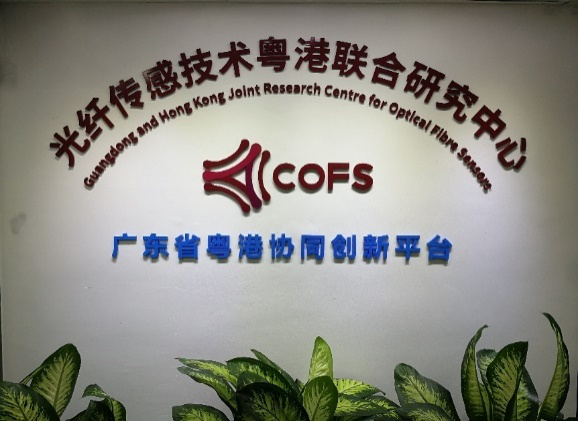
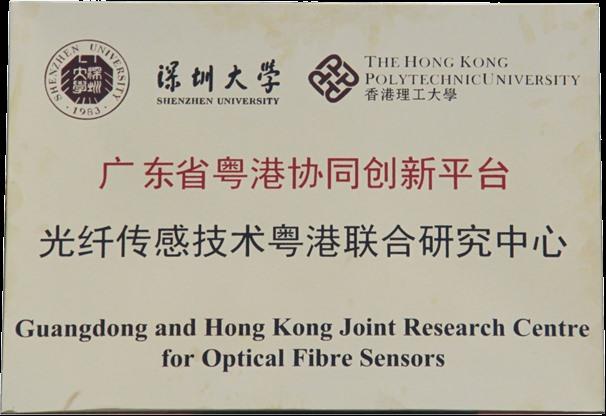
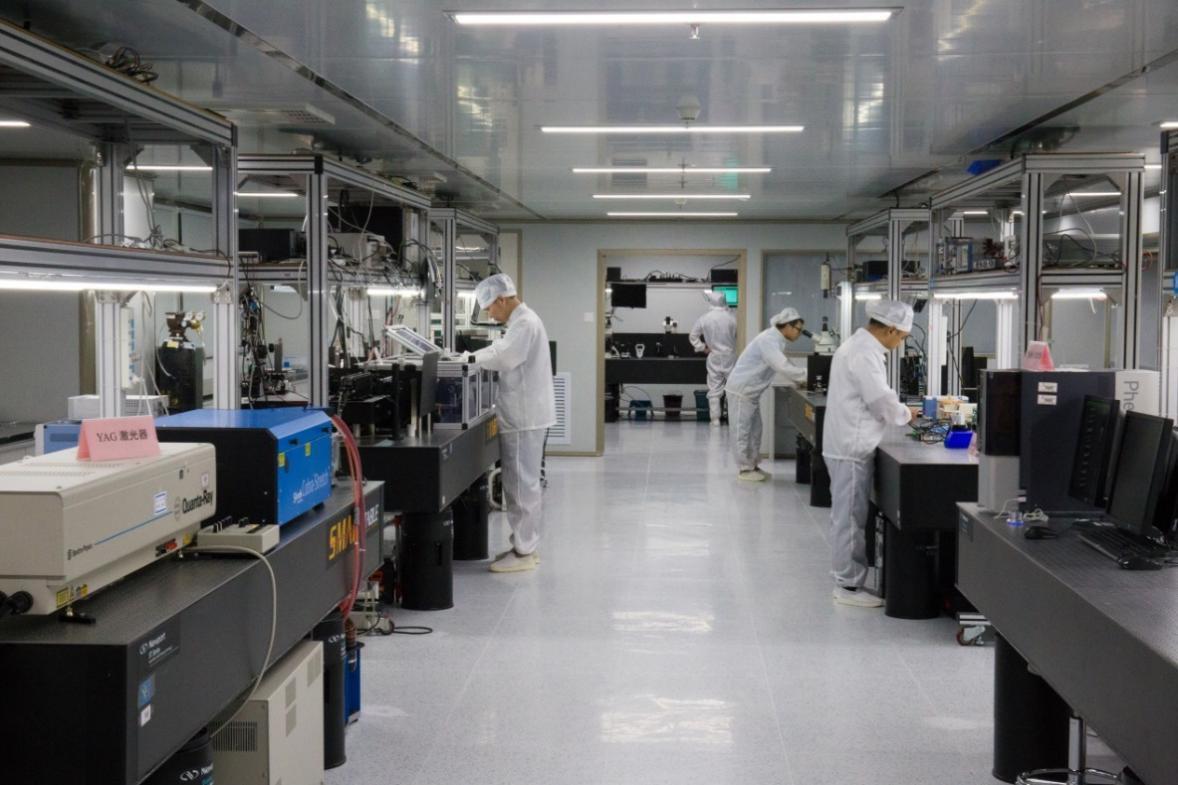
Optical Cleanroom Laboratory
Guangdong Exhalation Test Engineering Technology Research Center
The Guangdong Exhalation Test Engineering Technology Research Center was established in September 2017 and officially recognized by the Guangdong Provincial Department of Science and Technology. It is the first engineering center in China dedicated to research on exhalation test technology. The center, currently affiliated with the College of Physics and Optoelectronic Engineering at Shenzhen University, focuses on research related to isotopic medicine and medical detection technologies crucial for people's health and well-being.
The center integrates various disciplines such as isotope labeling and measurement technology, chemical analysis, sensor technology, electronics, software analysis, pattern recognition, pharmacy, and clinical medicine into its engineering technology platform. Through the integration and transformation of research outcomes into practical products, the center aims to facilitate the conversion of exhalation test research results into exhalation test products.
The center boasts a range of large-scale equipment including gas chromatography-mass spectrometry, carbon isotope analyzer, liquid scintillation counter, water vapor isotope analyzer, high-performance liquid chromatography, high-performance electronic nose, and red blood cell lifespan analyzer, among others.
Since its establishment, the center has received the "Outstanding Contribution Award in Nuclear Technology Applications" from the China Isotope and Radiation Industry Association. Additionally, the developed red blood cell lifespan exhalation test instrument has won the third prize in the "China Medical Device Innovation and Entrepreneurship Competition," received an excellent award in the final round of the "Seventh China Innovation and Entrepreneurship Competition," and obtained an outstanding award in the final round of the "Tenth Shenzhen Innovation and Entrepreneurship Competition."
Over the years, the center has initiated over ten national projects and more than twenty provincial and ministerial projects, applied for numerous domestic and international patents, and published over ten high-level research papers.


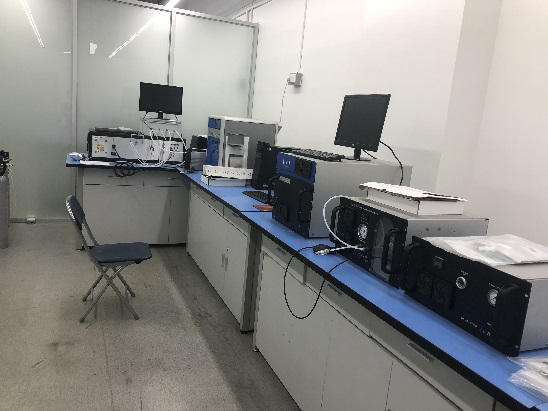
City-level Key Laboratories
Serial NumberNameApproval DatePrincipalCategory
|
|
|
|
|
1 |
Shenzhen Laser Engineering Key Laboratory |
October 2001 |
Ruan Shuangchen |
City-level Key Laboratory |
2 |
Shenzhen Micro/Nano Photon Information Technology Key Laboratory |
December 2006 |
Li Jingzhen |
City-level Key Laboratory |
3 |
Shenzhen Sensor Technology Key Laboratory |
December 2008 |
Li Xuejin |
City-level Key Laboratory |
4 |
Shenzhen High-Purity Germanium Material and Detector Manufacturing Key Laboratory |
December 2010 |
Sun Huibin |
City-level Key Laboratory |
5 |
Shenzhen Optical Fiber Sensing Network Technology Engineering Laboratory |
December 2012 |
Li Xuejin |
City-level Engineering Laboratory |
6 |
Shenzhen Biomedical Optics Micro/Nano Detection and Imaging Key Laboratory |
August 2013 |
Tian Jindong |
City-level Key Laboratory |
7 |
Shenzhen Internet of Things Photon Device and Sensing System Key Laboratory |
October 2014 |
Wang Yiping |
City-level Key Laboratory |
8 |
Shenzhen Optical Material Femtosecond Laser Preparation Technology Engineering Laboratory |
December 2016 |
Wang Yiping |
City-level Engineering Laboratory |
9 |
Shenzhen Advanced Thin Film and Application Key Laboratory |
September 2017 |
Liang Guangxing |
City-level Key Laboratory |
10 |
Shenzhen Intelligent Optical Measurement and Sensing Key Laboratory |
April 2020 |
Yu Qifeng |
City-level Key Laboratory |
11 |
Shenzhen Photonics and Biophotonics Key Laboratory |
February 2022 |
Qu Junle |
City-level Key Laboratory |
12 |
Shenzhen Ultrafast Laser Micro/Nano Manufacturing Key Laboratory |
March 2023 |
Liao Changrui |
City-level Key Laboratory |
13 |
Shenzhen Nuclear and Radiation Safety Key Laboratory |
January 2024 |
Liu Yong |
City-level Key Laboratory |


![]() Add : No. 3688, Nanhai Avenue, Nanshan District, Shenzhen, Guangdong Province
Add : No. 3688, Nanhai Avenue, Nanshan District, Shenzhen, Guangdong Province ![]() Email : cpoe@szu.edu.cn
Email : cpoe@szu.edu.cn ![]() Phone: 0755-26538735
Phone: 0755-26538735 ![]() Fax : 0755-26538735
Fax : 0755-26538735